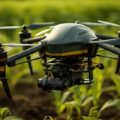The importance of safety in robotics: a robotics blog about the importance of safety
The use of robots has increased dramatically in recent years, and with this growth comes a growing concern for safety. Whether robots are working in factories, hospitals, or homes, they must be designed and operated in a way that is safe for people and the environment. In this robotics blog, we examine the importance of safety in robotics and why it is critical to the continued growth and success of the industry.
Human interaction: one of the biggest safety issues in robotics is the interaction between robots and humans. Robots are often designed to work alongside humans, and it is essential that they do so safely. This means that robots must have safety features that prevent accidents and minimize the risk of injury to humans.
Environment: In addition, robots must be designed and operated in an environmentally friendly manner. This means that they must be constructed from non-toxic and biodegradable materials and be powered by renewable energy sources. In addition, robots must be designed to avoid accidents and minimize the risk of environmental damage.
Reliability: robot reliability is another important aspect of safety. Robots must be designed and built to be reliable and not break easily. This is important because a malfunctioning robot can pose a serious hazard to people and the environment.
Data privacy: In addition, robots must be designed and operated in a way that ensures the privacy of personal and sensitive information. This is especially important for robots used in the healthcare sector and other sensitive areas.
In summary, safety is critical in the world of robotics, and it is essential that robots are designed, built, and operated to be safe for people and the environment. Whether you are an engineer, scientist, or just a curious observer, it is important that you understand the importance of safety in robotics and why it is a critical issue that needs to be addressed.








